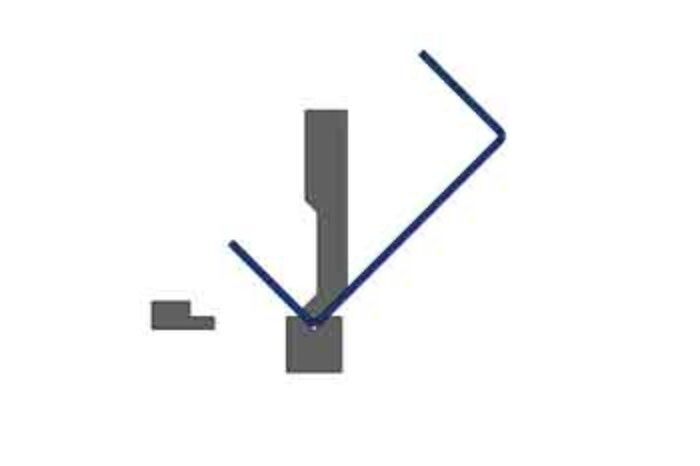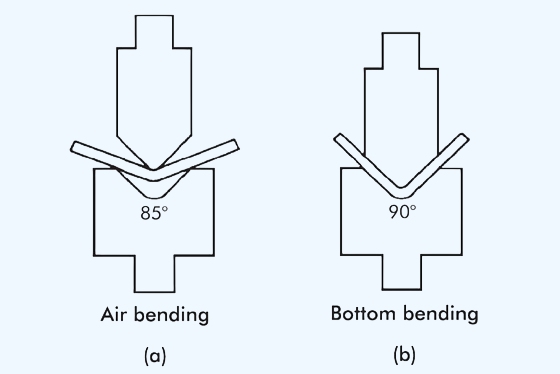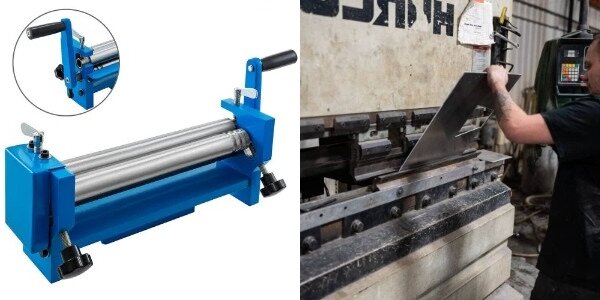Heb je hulp nodig bij het kiezen tussen elektrolytisch polijsten of mechanisch polijsten om je metaal af te werken? De twee methoden hebben voordelen, maar de keuze kan een groot verschil maken in het resultaat van je project. Deze blogpost helpt je om de verschillen tussen deze twee polijstmethodes te begrijpen, zodat je een weloverwogen keuze kunt maken die past bij jouw behoeften.
Het elektrochemische proces verwijdert een dunne laag metaal van het oppervlak. Dit resulteert in een glanzende, gladde afwerking. Mechanisch polijsten maakt gebruik van schurend materiaal om metaal te slijpen en op te poetsen, wat een gelijkaardig resultaat oplevert. Elke methode heeft voor- en nadelen, waar ik dieper op in zal gaan.
Je kunt de beste techniek voor je project kiezen door de voordelen en beperkingen van de verschillende technieken te begrijpen.
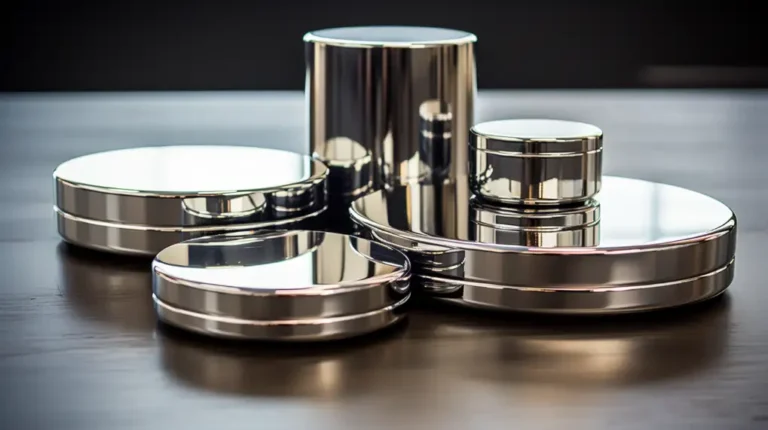
Inzicht in elektrolytisch polijsten
Wat is elektrolytisch polijsten?
Het elektrochemische proces van elektrolytisch polijsten verwijdert een dunne materiaallaag van het metaaloppervlak. Dit resulteert in een glanzende en gladde afwerking. Dit proces, ook bekend als reverse plating of re-plating, verbetert de corrosiebestendigheid van metalen en verbetert hun uiterlijk.
Procesoverzicht
Elektrolyten kiezen
De juiste elektrolyt kan het elektrolytisch polijsten maken of breken. De elektrolyt is een zure oplossing die helpt bij het gelijkmatig verwijderen van materiaal van het metaaloppervlak.
Uitrusting en installatie
Voor elektrolytisch polijsten zijn de volgende onderdelen nodig:
- Elektrolyt: Een zure oplossing die het verwijderen van materiaal vergemakkelijkt.
- Kathode: De elektrode die het circuit voltooit.
- Anode: Het metalen onderdeel dat elektrolytisch gepolijst is.
- Temperatuurregeling: Het elektrolyt tussen 77-83 graden houden is cruciaal voor optimale resultaten.
- Elektrische stroom: De elektrische dichtheid varieert afhankelijk van de elektrolyt. Het kan variëren van 140 ampère tot 250 ampère.
- Tijd: De tijd dat het metaal wordt blootgesteld aan elektrische stroom beïnvloedt de uiteindelijke afwerking.
De stapsgewijze procedure
- Voorbereiding: Reinig het metalen oppervlak van alle verontreinigingen.
- Onderdompeling: Dompel de anode (metalen deel) en de kathode onder in de elektrolyt.
- Elektrolytisch polijsten: Gebruik gelijkstroom om de metaalionen te veroorzaken en het oppervlak glad te maken.
- Spoelen: Verwijder het onderdeel en spoel het grondig af om eventueel achtergebleven elektrolyten te verwijderen.
- Drogen: Droog de onderdelen om watervlekken of vlekken te voorkomen.
Voordelen van elektrolytisch polijsten
Gladheid van het oppervlak
Elektrolytisch polijsten kan zowel het uiterlijk als de prestaties verbeteren door de microscopische pieken en dalen van een oppervlak te verwijderen.
Corrosiebestendigheid
Het verbetert de corrosieweerstand van metalen door onzuiverheden van het oppervlak te verwijderen en een gepassiveerde laag te vormen.
Biocompatibiliteit
De oppervlakken van elektrolytisch gepolijste metalen zijn biocompatibel en vrij van verontreinigingen, waardoor ze ideaal zijn voor voedsel- en medische verwerking.
Nadelen van elektrolytisch polijsten
Materiële beperkingen
Elektrolytisch polijsten is niet geschikt voor alle metalen. Dit proces is het meest geschikt voor roestvrij staal, bepaalde nikkellegeringen en aluminium. Sommige metalen, zoals titanium en zink, geven mogelijk niet de gewenste resultaten.
Kostenoverwegingen
Door het gebruik van gespecialiseerde chemicaliën en apparatuur is elektrolytisch polijsten duurder dan mechanisch schuren. De extra kosten zijn misschien niet gerechtvaardigd voor toepassingen die geen hoge precisie vereisen.
Mechanisch polijsten begrijpen
Wat is mechanisch polijsten?
Het mechanische polijstproces slijpt en polijst het oppervlak van een metaal om een gladde afwerking te verkrijgen. Deze methode verwijdert onvolkomenheden van metalen oppervlakken, verbetert de esthetiek en bereidt ze voor op verdere verwerking.
Procesoverzicht
Gereedschappen en schuurmiddelen
Voor mechanisch polijsten heb je verschillende gereedschappen en schuurmiddelen nodig. Deze omvatten slijpschijven, schuurpapieren, polijstpads en compounds. Het materiaal dat gepolijst moet worden en het gewenste resultaat bepalen welk schuurmiddel gebruikt wordt.
Technieken en methoden
Bij mechanisch polijsten worden verschillende technieken gebruikt, zoals slijpen en polijsten. Elke techniek heeft zijn toepassingen en resultaten, van het verwijderen van diepe krassen tot het verkrijgen van een spiegelende afwerking.
De stapsgewijze procedure
- Bereid voor: Reinig het metalen oppervlak en verwijder verontreinigingen. Het metalen oppervlak reinigen met oplosmiddelen en ontvetters zorgt ervoor dat vuil of olie het polijsten niet verstoort.
- Eerste slijper: Gebruik grove schuurmiddelen (bijv. korrel 60-80) om grote onvolkomenheden en ruwe plekken te verwijderen. Bij deze stap kan 0,5 mm of meer materiaal worden verwijderd om diepe krassen te verwijderen en het oppervlak vlak te maken.
- Tussentijds polijsten: Breng medium schuurmiddelen aan (bijv. korrel 120-240) om het oppervlak verder glad te maken en eventuele resterende ruwheid te verwijderen. Deze stap verwijdert ongeveer 0,1 mm materiaal en begint het oppervlak een uniforme afwerking te geven.
- Eindpolijsten: Gebruik fijne schuurmiddelen (bijv. korrel 400-600) en polijstmiddelen om de gewenste afwerking te verkrijgen. Deze stap verwijdert ongeveer 0,02 mm en produceert een zeer reflecterende afwerking.
- Schoonmaken: Verwijder alle polijstmiddelen en vuil van het oppervlak. Je kunt ultrasone reiniging of hogedrukreiniging gebruiken om alle polijstresten te verwijderen.
Voordelen van mechanisch polijsten
Veelzijdigheid
Het mechanisch polijstproces kan worden gebruikt op verschillende metalen en legeringen. Dit maakt het een uitstekende optie voor verschillende toepassingen.
Aanpassing oppervlak
Deze methode biedt veel flexibiliteit. Je kunt kiezen uit verschillende schuurmiddelen om verschillende afwerkingen te bereiken.
Kostenefficiëntie
De mechanische polijstmethode is kosteneffectiever dan elke andere polijstmethode. Het is minder duur en vereist minder apparatuur.
Nadelen van mechanisch polijsten
Oppervlakteschade
Verkeerd gebruik van schurende gereedschappen kan schade aan het oppervlak veroorzaken, zoals krassen en gutsen. Je hebt bekwame technici nodig om deze problemen te vermijden en een afwerking van hoge kwaliteit te verkrijgen.
Beperkingen gladheid oppervlak
Elektrolytisch polijsten kan een betere optie zijn voor toepassingen die ultrasoepele en reflecterende oppervlakken vereisen. Elektrolytisch polijsten is een goede keuze voor toepassingen die ultrasoepele oppervlakken vereisen.
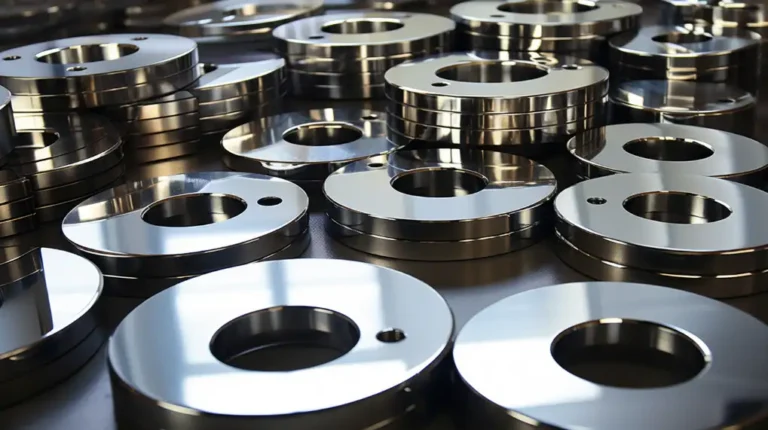
Vergelijkende analyse: Elektrolytisch polijsten vs Mechanisch polijsten
Oppervlaktekwaliteit
Soepelheid en reflectie
Elektrolytisch polijstenDeze methode zorgt voor een superieure afwerking en reflectie door het verwijderen van een gelijkmatige laag materiaal op microscopische schaal. Ra-waarden (ruwheid) kunnen zo laag zijn als 0,1 m, waardoor een spiegelende afwerking ontstaat.
Mechanisch polijsten: Mechanisch polijsten kan een gelijkmatige afwerking produceren, maar bereikt meestal een Ra-waarde tussen 0,2 en 0,5 micrometer. De mate van reflectiviteit hangt af van het slijpmiddel en de vaardigheid van de technicus, maar kan meestal niet tippen aan de hoge glans van elektrolytisch polijsten.
Microstructurele effecten
Elektrolytisch polijstenDit proces verbetert het oppervlak van metalen door onregelmatigheden in de microstructuur te verminderen, waardoor de corrosiebestendigheid en duurzaamheid verbeteren.
Mechanisch slijpen: Mechanisch slijpen kan microkrassen veroorzaken en spanning op het materiaal zetten. Dit kan de prestaties na verloop van tijd en de corrosiebestendigheid beïnvloeden.
Materiaal compatibiliteit
Metalen en legeringen
Elektrolytisch polijsten: het meest geschikt voor roestvrij staal, aluminium en bepaalde legeringen op nikkelbasis. Deze methode werkt mogelijk niet voor bepaalde materialen, zoals titanium of zink.
Mechanisch polijsten: Veelzijdig, kan gebruikt worden op verschillende metalen, waaronder roestvrij staal, aluminium, messing, koper en titanium.
Andere materialen
Elektrolytisch polijsten: Door de aard van het elektrochemische proces is het beperkt tot materialen die elektriciteit geleiden.
Mechanisch polijsten: Kan worden gebruikt voor niet-metalen materialen zoals keramiek en kunststoffen, mits de juiste schuurmiddelen worden gebruikt.
Geschiktheid voor toepassingen
Medische apparaten
Elektrolytisch polijsten: Ideaal voor medische apparatuur vanwege de mogelijkheid om gladde, biocompatibele oppervlakken te creëren die vrij zijn van verontreinigingen.
Mechanisch polijsten: Gebruikt voor medische hulpmiddelen die minder strenge oppervlakteafwerkingen maar kan een ander niveau van biocompatibiliteit bereiken dan elektrolytisch polijsten.
Apparatuur voor voeding en drank
Elektrolytisch polijsten: Dit proces produceert een glad, schoon en corrosiebestendig oppervlak dat geschikt is voor voedsel- en drankapparatuur.
Mechanisch polijsten: Dit kan worden gebruikt voor voedsel- en drankapparatuur, maar vereist mogelijk extra reinigingsstappen om de hygiëne te garanderen.
Ruimtevaart Onderdelen
Elektrolytisch polijsten: Wordt gebruikt om oppervlakken glad te maken en de corrosieweerstand te verbeteren voor onderdelen die resistent en duurzaam moeten zijn.
Mechanisch polijsten: Ideaal voor structurele onderdelen waarbij een extreem glad oppervlak niet kritisch is.
Auto-onderdelen
Elektrolytisch polijsten: Gebruikt op onderdelen met hoge prestaties en esthetiek die een superieure afwerking vereisen.
Mechanisch polijsten: Wordt vaak gebruikt voor veel auto-onderdelen en biedt een goede afwerking voor de meeste toepassingen.
Milieu-impact
Afval en bijproducten
Galvanisch verzinken: Produceert chemisch afval, dat op de juiste manier moet worden beheerd om milieuvervuiling te voorkomen.
Mechanisch polijsten: Produceert afvalmateriaal (bijv. metaalschilfers of gebruikte schuurmiddelen), dat kan worden gerecycled en afgevoerd met minder impact op het milieu.
Energieverbruik
Elektrolytisch polijsten: Voor dit proces is elektrische energie nodig om de elektrochemische reactie voort te zetten. De hoeveelheid energie die nodig is, hangt af van de grootte van de operatie.
Mechanisch polijsten: Deze methode maakt gebruik van mechanische energie. Deze methode is minder intensief, maar verbruikt nog steeds veel energie, afhankelijk van de gebruikte apparatuur en de duur.
Kostenanalyse
Eerste installatie
Elektrolytisch polijsten: Hoge initiële kosten omdat er speciale apparatuur en elektrolytoplossingen nodig zijn.
Mechanisch polijsten: Lagere initiële kosten omdat er essentieel gereedschap en schuurmiddelen nodig zijn.
Kosten op lange termijn
Elektrolytisch polijsten: De kosten omvatten onderhoud, vervanging van elektrolyten en verwijdering van afval.
Mechanisch polijsten: Langetermijnkosten omvatten het vervangen van slijpmiddelen en slijtage van polijstapparatuur.
Onderhoud en werking
Elektrolytisch polijsten: Dit proces vereist regelmatig onderhoud om een constante kwaliteit te behouden.
Mechanisch polijsten: Regelmatige controle van het gereedschap is vereist, evenals het vervangen van versleten schuurmiddelen en de juiste werking van mechanische apparaten.
Snelle vergelijking: elektrolytisch polijsten vs mechanisch polijsten
Deze snelle referentie helpt je de beste methode voor jouw project te bepalen.
| Aspect | Elektrolytisch polijsten | Mechanisch polijsten |
|---|---|---|
| Gladheid van het oppervlak | Ultragladde, spiegelachtige afwerking | Gladde afwerking, maar minder reflecterend |
| Corrosiebestendigheid | Hoog | Matig |
| Biocompatibiliteit | Uitstekend | Goed |
| Materiaal compatibiliteit | Het beste voor roestvrij staal, aluminium, nikkellegeringen | Veelzijdig, geschikt voor de meeste metalen en sommige niet-metalen |
| Complexe geometrieën | Ideaal voor ingewikkelde vormen en interne oppervlakken | Beperkt tot toegankelijke oppervlakken |
| Kosten | Hoger door gespecialiseerde apparatuur en materialen | Lager, budgetvriendelijker |
| Verwerkingstijd | Langer | Sneller |
| Milieu-impact | Beheer van chemisch afval vereist | Fysiek afval, over het algemeen minder belastend voor het milieu |
| Ideale industrieën | Medische apparatuur, voedingsmiddelen & dranken, lucht- en ruimtevaart, farmaceutica | Auto-industrie, metaalproductie, consumptiegoederen, bouw |
| Afwerkingen op maat | Beperkt | Ruime keuze aan afwerkingen |
| Hybride aanpak | Gebruikt voor eindafwerking na mechanisch polijsten | In eerste instantie gebruikt om grote onvolkomenheden te verwijderen |
Elektrolytisch polijsten vs Mechanisch polijsten: hoe maak je de beste keuze?
Waarom voor elektrolytisch polijsten kiezen?
Wanneer dat nodig is:
- Ultraglad oppervlak nodig: Voor projecten die een sterk reflecterende, spiegelachtige afwerking vereisen.
- Corrosiebestendig: Ideaal in omgevingen die gevoelig zijn voor corrosie.
- Biocompatibiliteit: Vereist voor medische hulpmiddelen en implantaten.
- Complexe vormen: Ideaal voor onderdelen met complexe geometrieën of interne oppervlakken.
Waarom mechanisch polijsten een goede optie is?
Wanneer mechanisch polijsten de voorkeur heeft:
- Kosteneffectief: Ideaal voor projecten met een krap budget.
- Veelzijdig: Kan worden gebruikt op vele metalen en andere materialen.
- Afwerkingen op maat: Biedt een verscheidenheid aan oppervlaktetexturen, van mat tot glanzend.
- Snelle doorlooptijdSneller proces voor oppervlakken met een minder kritische gladheid.
Hybride benaderingen en hun voordelen
Het combineren van mechanisch polijsten met elektrolytisch polijsten kan het beste van beide bieden:
- Initieel mechanisch polijsten: Verwijdert onvolkomenheden snel en vormt materiaal.
- Elektrolytisch polijsten: Bereikt superieure gladheid en corrosiebestendigheid.
- Evenwichtige oplossing: Combineert de sterke punten van beide technieken voor optimale resultaten.
Conclusie
De specifieke vereisten van je project bepalen of je kiest voor elektrolytisch polijsten of mechanisch polijsten. Elektrolytisch polijsten biedt afwerkingen van hoge kwaliteit met verbeterde corrosiebestendigheid en biocompatibiliteit. Mechanisch polijsten kan gebruikt worden voor veelzijdige, kosteneffectieve toepassingen met gematigde oppervlaktevereisten. Hybride benaderingen combineren beide methoden om optimale resultaten te bereiken.
Heb je een betrouwbare fabrikant van plaatwerkonderdelen nodig? Dan bent u bij Shengen aan het juiste adres. Wij zijn gespecialiseerd in lasersnijden, buigen, oppervlakte-afwerking en CNC-verspaning van plaatmetaal. Neem contact op met Shengen Vandaag nog en zoek hulp bij professionals!
FAQ
Kunnen mechanisch en elektrolytisch polijsten samen worden gebruikt?
Ze kunnen samen worden gebruikt. Elektrolytisch polijsten is een geweldige manier om een reflecterende, gladde en corrosiebestendige afwerking te creëren. Deze hybride methode combineert hoogwaardige resultaten met kosteneffectiviteit.
Wat zijn de beste materialen voor elektrolytisch polijsten?
Elektrolytisch polijsten is het beste voor roestvrij staal, aluminium en bepaalde legeringen op nikkelbasis. Deze materialen zijn glad en corrosiebestendig. Het elektrolytisch polijsten van koper, messing, titanium en zink kan wisselende resultaten opleveren.
Wat is het verschil in kosten tussen elektrolytisch polijsten en mechanisch polijsten?
Door de gespecialiseerde apparatuur, materialen en processen die nodig zijn voor elektrolytisch polijsten, zijn ze over het algemeen duurder. Dit proces vereist regelmatig onderhoud en afvalverwerking. Mechanisch polijsten kan kosteneffectief zijn voor projecten met een beperkt budget of wanneer ultrasoepele oppervlakken niet kritisch zijn.
Welke sectoren zullen het meest profiteren van polijsten?
Vanwege de superieure afwerking biedt elektrolytisch polijsten voordelen voor industrieën zoals medische apparatuur, voedingsmiddelen, dranken, ruimtevaart en farmaceutica. Mechanisch polijsten biedt een kosteneffectieve afwerking voor diverse toepassingen, waaronder auto-onderdelen, consumentengoederen, bouw en metaalproductie.
Meer bronnen:
Type polijsten - Bron: Sybridge
Chemisch-mechanisch polijsten - Bron: Wikipedia
Hey, ik ben Kevin Lee

De afgelopen 10 jaar heb ik me verdiept in verschillende vormen van plaatbewerking en ik deel hier de coole inzichten die ik heb opgedaan in verschillende werkplaatsen.
Neem contact op

Kevin Lee
Ik heb meer dan tien jaar professionele ervaring in plaatbewerking, gespecialiseerd in lasersnijden, buigen, lassen en oppervlaktebehandelingstechnieken. Als technisch directeur bij Shengen zet ik me in om complexe productie-uitdagingen op te lossen en innovatie en kwaliteit in elk project te stimuleren.


